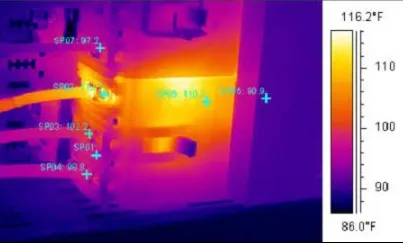Blog

Radon Test Results Explained: What Your Number Means and Next Steps
Introduction
You’ve just received your radon test results — and now you’re staring at a number like “3.2” or “6.8.” But what does that really mean for your home and your health?
Radon is a naturally occurring radioactive gas that can enter your home through cracks in the foundation or crawl spaces. Because it’s invisible and odorless, many homeowners in Plainfield, Illinois don’t realize it’s present until they test for it.
At Smart Choice Home Inspections, we help homeowners interpret these results every day. In this guide, we’ll break down what your radon number means, how to respond based on EPA guidelines, and the practical steps to reduce radon levels in your home if needed.
Understanding Radon Test Results
A radon test measures the concentration of radon gas in the air, expressed in picocuries per liter (pCi/L). The Environmental Protection Agency (EPA) recommends that any home with levels of 4.0 pCi/L or higher take corrective action, known as mitigation.
What Different Radon Levels Mean:
Below 2.0 pCi/L: Excellent — your home’s radon levels are low and safe. Continue testing every two years or after major renovations.
2.0 – 3.9 pCi/L: Acceptable, but retesting is recommended. Radon levels can fluctuate seasonally, so regular monitoring helps maintain safety.
4.0 pCi/L or higher: Action needed. The EPA and Illinois Department of Public Health recommend installing a radon mitigation system to reduce levels.
Even if your number is just under 4.0 pCi/L, experts still advise exploring mitigation, especially if your home has children, a basement, or you spend significant time on lower floors.
Why Radon Is a Concern
Radon gas forms naturally from the breakdown of uranium in soil and rock. It can seep through small foundation cracks, floor drains, sump pits, or even porous concrete.
Once inside your home, radon can accumulate — particularly in basements and lower levels where ventilation is limited. Over time, exposure to high radon levels can cause health issues.
Health Impacts:
Radon is the second leading cause of lung cancer after smoking.
The EPA estimates around 21,000 lung cancer deaths in the U.S. each year are linked to radon exposure.
Long-term exposure risk increases with higher concentrations and longer residency in the same home.
Plainfield and surrounding areas in Will County are known to have elevated radon potential, which makes regular testing especially important for local homeowners.
What to Do After Receiving Your Radon Test Results
Interpreting your radon number is just the first step. Here’s what to do next, depending on your results.
Step 1: Confirm the Accuracy of the Test
If your initial test shows a high reading, perform a follow-up test to confirm results.
Use a long-term test (90+ days) for more accurate seasonal averages.
If you had a short-term test (2–7 days), consider retesting under normal living conditions with windows closed.
Step 2: Consult a Professional
If your results are 4.0 pCi/L or higher, contact a licensed radon mitigation specialist. They can design a system to lower levels by venting radon safely outside the home.
Step 3: Install a Mitigation System (if needed)
A typical radon mitigation system uses a PVC pipe and fan to pull radon gas from beneath the foundation and release it outdoors. Most systems can reduce radon by up to 99%.
Professional installation is essential to ensure proper airflow, sealing, and compliance with Illinois state regulations.
Step 4: Retest After Mitigation
After the system is installed, retest within 30 days to verify that levels have dropped. Many mitigation contractors include this verification as part of their service.
Step 5: Maintain Regular Monitoring
Radon levels can change over time due to soil conditions, weather, or home renovations. Recheck every two years or after finishing basements or sealing foundations.
Frequently Asked Questions
Is radon only a problem in older homes?
No. Any home, new or old, can have high radon levels. Modern airtight construction can sometimes trap radon more effectively than older homes.
Does Plainfield have high radon levels?
Yes. Will County, which includes Plainfield, is classified by the EPA as a Zone 1 area, meaning it has the highest potential for elevated radon concentrations.
Can I test for radon myself?
Yes. DIY kits are available, but professional testing provides more precise readings and expert interpretation of results.
Is radon mitigation expensive?
Typical mitigation systems in Illinois cost between $800 and $1,500, depending on your home’s layout and foundation type — a small investment for long-term health protection.
Will a radon mitigation system affect my home’s value?
In most cases, it can increase buyer confidence. Homes with mitigation systems often sell faster because the issue is already addressed.
Conclusion
Understanding your radon test results is key to protecting your family’s health and ensuring your Plainfield home is safe. Whether your number is low or high, taking action — from regular testing to installing a mitigation system — keeps your air clean and your peace of mind intact.
Smart Choice Home Inspections offers accurate radon testing and professional guidance for homeowners across Plainfield, Illinois. Our goal is to help you understand your results clearly and take confident next steps toward a healthier home environment.
Client Reviews and Testimonials
Our Services
Helpful Links
© 2025 All Rights Reserved | Smart Choice Home Inspections
